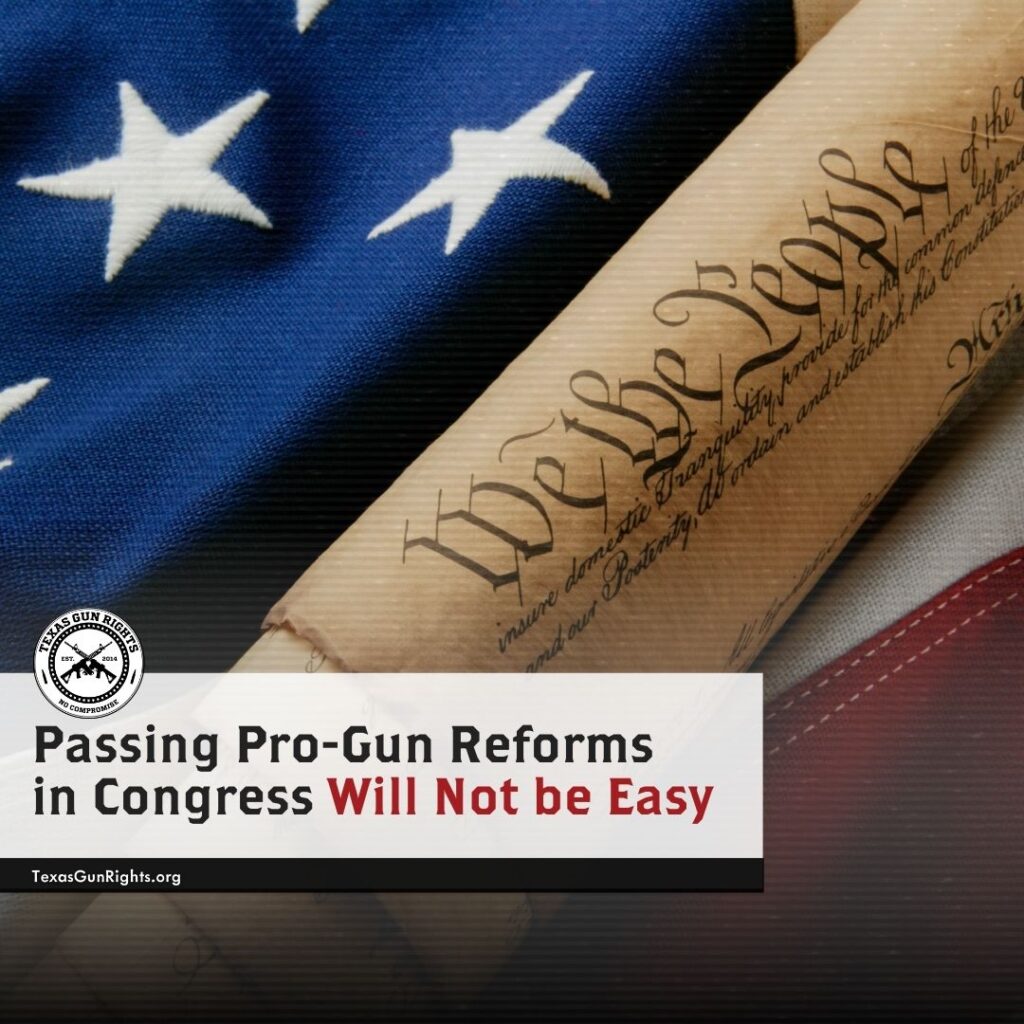With the recent electoral victories for President Trump and congressional Republicans, it may seem like this is a time for gun owners to sit back and celebrate, but the work is really only just now getting started. In reality, the fight to restore the Second Amendment will not be easy, even with Republicans in control of the presidency and Congress.
The good news is President Trump appears to be more proactive in advancing a pro-gun agenda during his second term, especially with his recent executive order instructing the federal government to review unconstitutional actions taken against gun owners during the Biden administration. However, without concerted efforts from both the executive branch and a cooperative Congress, meaningful pro-gun legislation at the federal level may not happen.
As it stands right now, there are 218 Republicans, 215 Democrats, and two vacancies in the U.S. House. In the Senate, the margins are more favorable for Republicans, where they hold 53 seats to the Democrats’ 47, which includes two independent Senators who caucus with Democrats.
To put it in perspective, during Trump’s first two years in office, Republicans held a more favorable 241 to 194 advantage in the House and 51 to 47 in the Senate, yet no meaningful pro-gun reforms were implemented at the time.
We also have to remember that there are several Republican members of the House, such as Brian Fitzpatrick (PA), Maria Salazar (FL), and Carlos Gimenez (FL), who are known to be unreliable when it comes to defending the Second Amendment. These lawmakers can easily kill any pro-gun bill by teaming up with House Democrats, who can be counted on to monolithically oppose pro-gun bills.
Now more than ever, all Republican lawmakers need to hear from their constituents that they expect pro-gun actions. Gun owners were a major factor in the Republican victories in November, and now it’s time for those lawmakers to deliver on their campaign promises.
It will take an active grassroots effort to hold Congress accountable, and it may even require holding weak Republicans accountable in the midterms if they fail to support the Second Amendment agenda.
President Trump can do many great things, especially with arguably the most “pro-gun” adviser to a President in U.S. History, but we have to remember the US is not a dictatorship. It still has a republican form of government where a certain degree of alignment must take place among the separate branches of government — the executive and legislative branches in this case — for legislation to ultimately be passed. These branches have to be in synergy for legislation to become a policy reality.
Let’s face it, the executive branch is not omnipotent. It cannot unilaterally repeal gun control measures such as the National Firearms Act, which were passed through legislation that was eventually signed by the president. In effect, it’s going to take hard work in both chambers of Congress to realize these goals. This fight will not be a cakewalk by any stretch of the imagination.
Restoring our Second Amendment rights will take time and relentless grassroots pressure. It’s going to require a commitment to electing true pro-gun champions and a willingness to hold even members of our own party accountable when they fall short of their promises. Gun owners cannot afford to be complacent now – the real fight has only just begun.







